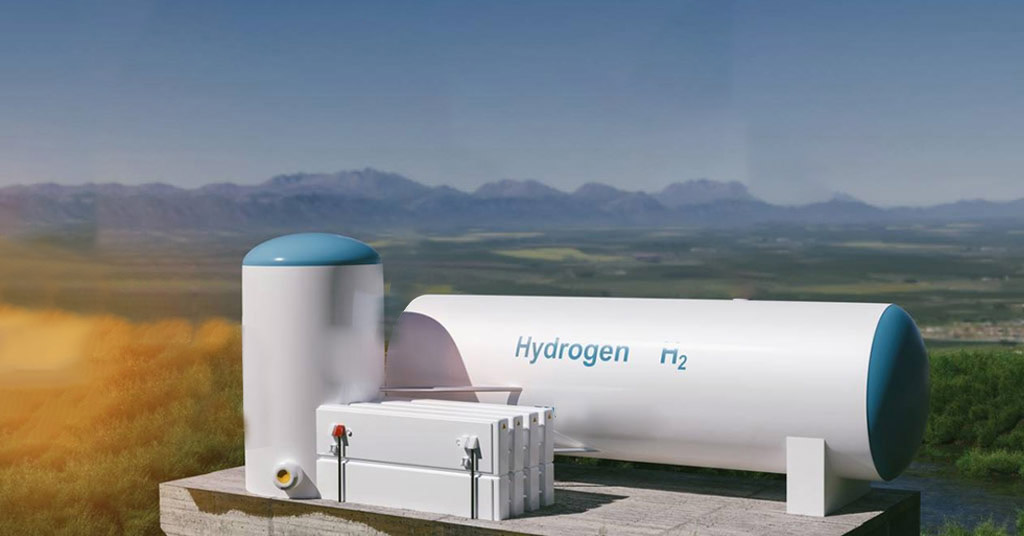How The oil and Gas Industry are Embracing Hydrogen, but is it Overrated?
- 12-Jun-2023 5:06 PM
- Journalist: Shiba Teramoto
US: The creation of Hydrogen is advantageous to large oil and is consistent with previous extravagant oil and gas projects. The new idea is to spend a lot of money gathering renewable electricity and transforming it into liquid Hydrogen energy that can be transported throughout the world and used to power trucks, ships, and aeroplanes while also boosting the steel and chemical sectors.
The Hydrogen vision plays to the assets of big oil, which include massive money, thorough project management, and a large workforce. Consider BP's $9 billion investment in the Gulf of Mexico's Mad Dog 2 deepwater oil field, which is anticipated to provide 140,000 boepd (barrels of oil equivalent per day) from 14 new wells by 2024.
Oil and gas businesses are a perfect fit for Hydrogen due to their extensive knowledge with natural gas as well as the fact that they generated large profits in 2022 and can afford to take a chance on new endeavours.
ExxonMobil established Low Carbon Solutions in 2021 with the goal of lowering CO2 emissions through the expansion of CCS and novel fuels like blue Hydrogen. While the by-product of CO2 would be caught and buried (through CCS) beneath the ocean, blue Hydrogen is created when methane, CH4, breaks down.
Around $2 billion in spending will be made in 2023, followed by $3 billion in 2025 and $6 billion in 2027.
ExxonMobil has advanced plans to build a 1 bcfd blue Hydrogen and Ammonia production plant along with a 7 million tonnes per year CCS system at its refinery in Texas, Baytown. ExxonMobil's Olefins manufacturing facility may reduce carbon emissions by 30% by using the Hydrogen.
The business is in negotiations with prospective clients to buy excess Hydrogen and Ammonia volumes in the 2027–2028-time frame.
ExxonMobil's contribution to a broader joint venture with other partners to construct a CCS hub in Houston would be the Baytown project. By 2040, the goal might be to dispose of 100 million tonnes of CO2 annually, or about 2% of all U.S. emissions at present.
Such multidisciplinary CCS and Hydrogen initiatives had previously been estimated to be worth up to $100 billion in total.
In the UK's industrial complex of Teesside, which is responsible for 5% of the country's industrial emissions, BP opened their Hydrogen door. The goal is for Teesside to develop into a significant Hydrogen hub for sectors like aviation, shipping, and heavy trucks—all of which have difficulty using battery power—as well as for challenging-to-abate industries like cement and steelmaking.
The original strategy, H2Teesside, called for producing blue Hydrogen. The most recent update to HyGreen would electrolyze water to produce green Hydrogen and oxygen. Due to the expense of electrolysis and clean power, if it is used, this is more expensive.
The bp initiatives in Teesside align with UK government objectives. By generating 1.5 Gw of hydrogen as a team, H2Teesside and HyGreen may meet 30% of the government's 5-Gw objective by 2030. Bp is also a part of the $36 billion AREH project, a Pilbara iron ore region-based Australian enterprise that will use solar and wind energy to produce green Hydrogen and green Ammonia for local use and export to Southeast Asia. In comparison to a normal coal or gas power station, which has a capacity of 0.6 GW, the eventual goal for green energy is 26 GW. About a third of the electricity Australia will produce in 2020 will be produced by 26 GW. Additionally, the AREH project will annually produce 9 million tonnes of green Ammonia or 1.6 million tonnes of green Hydrogen.
For a nation with only 26 million people, where coal power is predominated and coal exports are massive, the stats are astonishing.
Now that green electricity from wind and solar is more affordable and readily available, electrolysis of water for green Hydrogen appears to be a superior option. Furthermore, because solid oxide technology doesn't need a costly catalyst, it promises to make the process even more cost-effective.
The largest electrolyzer system in the EU was put into operation by Shell in 2021 as part of a goal to build a nationwide network of environmentally friendly Hydrogen.
The US government's plan to support up to 8 Hydrogen hubs in the US was foreshadowed by Shell's presentation of a Hydrogen hub concept at a Texas conference on renewable H2 in the same year.
At the Shell Energy Transition Campus in Amsterdam, Shell intends to test the solid oxide technology in four electrolyzer modules as part of a 1-Megawatt (Mw) demonstration project. The technology ought to work when utilising 25–30% less electric power when producing steam from waste heat.
These electrolyzers have an intriguing twist in that they can manufacture Hydrogen or use Hydrogen to create energy, much like fuel cells.
The blue Hydrogen that reforms Methane or the grey Hydrogen that reforms coal is produced by Chevron, the second-largest oil and gas firm in the United States after ExxonMobil. Since 2005, the company has sold Hydrogen through its conventional business, and it presently produces 1 million tonnes annually.
In order to manufacture Hydrogen, the US Department of Energy (DOE) and Chevron have teamed up to do research on renewable natural gas, such as gas from landfills. The construction of a green Hydrogen station in Indonesia that would produce Hydrogen and Ammonia using 250–400 Mw of renewable geothermal energy is part of a wider ambition. The desired amount of Hydrogen is 40,000 tonnes annually, or 110 tonnes per day. But if there is a market, this might be increased to 80,000 to 160,000 tonnes annually.
TotalEnergies had partnered with the Adani group, an Indian enterprise that might spend $50 billion over ten years to manufacture green Hydrogen. Given the high demand for fertiliser in India, the market for green Ammonia should be booming there.
When the contract was first announced in June 2022, TotalEnergies was expected to invest $5 billion, or 25% of the total.
Prior to 2030, the Adani group had stated that its initial objective was to create 2,700 tonnes per day, or 1 million tonnes of green Hydrogen annually. This tremendous amount eclipses all other production objectives.
However, Total Energies has suspended the agreement as it awaits the findings of an audit that Adani allegedly commissioned owing to financial problems.
It is commonly known that Saudi Arabia leads the OPEC and OPEC + cartels and is the world's second-largest oil production behind the United States.
The nation's ability to finance extraordinary initiatives is also well known. NEOM is one such exceptional project, with a $500 billion price tag. By proving the possibility of such things in the middle of a severe desert, the region is being constructed on a visionary approach to sustainability, clean drinking water, and climate change.
Unexpected is a massive initiative to manufacture green Hydrogen in NEOM in a nation where local oil and gas prices are the lowest in the world. It will begin producing 600 tonnes of green Hydrogen per day by 2026, which will be ready for export worldwide and prevent up to 5 million tonnes of CO2 emissions annually. It will be the largest commercial-scale production of green Hydrogen ever.
This new Hydrogen project is expected to cost $8.4 billion, with 73% of the funding coming from sources outside and inside Saudi Arabia.
Unexpectedly, according to Saudi Arabia's energy minister Prince Abdulaziz bin Salman, the country intends to be a significant provider of Hydrogen. Supporting a global shift to clean, sustainable energy is a second objective.
The amount of pure, green Hydrogen created by NEOM could prevent up to 5 million tonnes of CO2 from being produced annually. This most likely refers to industries like steel and chemical production, as well as difficult-to-abate uses like aviation and shipping fuels. Green Hydrogen, according to NEOM, might eventually account for 12% of world energy consumption, but this percentage is greater than the 5-7% range.
The 12% figure is related to a local green Hydrogen sector with a potential market value of $200 billion by 2050.
Hydrogen has so yet only received a tiny investment, despite significant interest. There has been a lot of press and public relations about this innovative new sector, but annual investments of a few billion dollars (max) per oil and gas giant pale in comparison to the $200 billion in worldwide greenfield Capex projected for 2023.
The oil and gas sector can, however, present their Hydrogen investments as a significant step towards achieving the Paris climate targets in the hopes of lessening the climate pressure that would otherwise force them to quit exploring for and producing oil and gas.
On the other hand, even though the oil and gas industry today provide around 57% of the world's energy, burning oil and gas results in 50% of all global carbon emissions. As a result, even if the oil and gas sector provided all the 7% clean Hydrogen energy by 2050 (unlikely), it might reduce world emissions from the aviation, shipping, steel, and chemical sectors by around 7%. But unless the amount of oil and gas burned (i.e., the number of oil and gas wells) significantly decreased between now and 2050, this wouldn't reduce emissions from burning oil and gas.
Beyond a restricted market for aviation and shipping fuel and the production of metals and chemicals (fertilisers and plastics), the broad market application of Hydrogen appears doubtful and may be a case of and too expensive.



